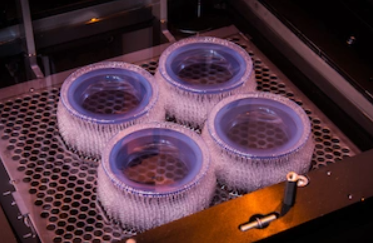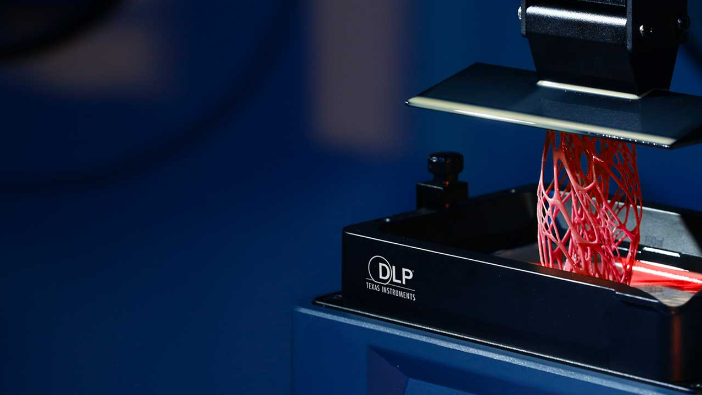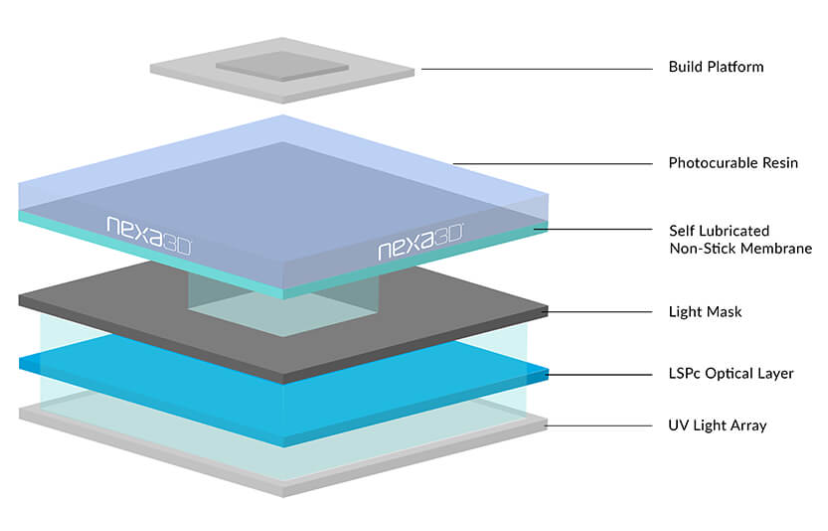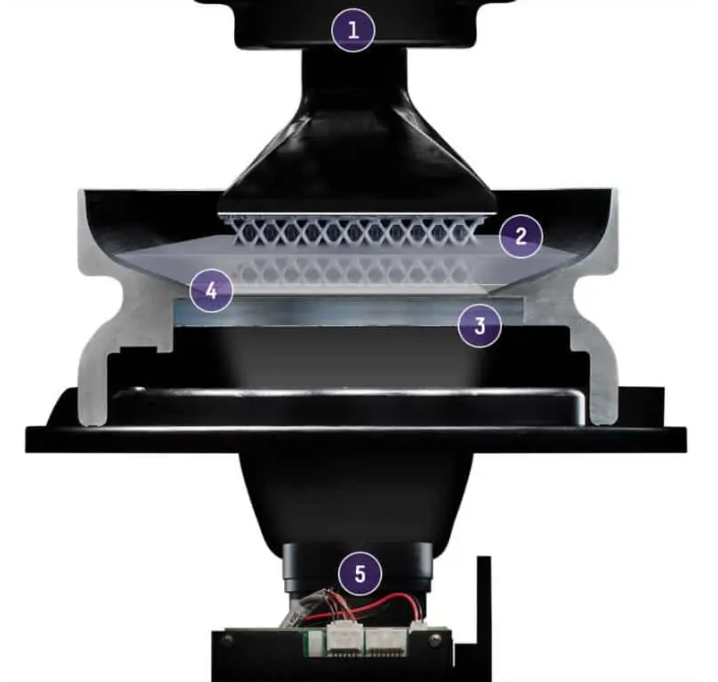Vat photopolymerization (VP) is a type of additive manufacturing (AM) that uses light to cure a liquid resin into a solid object. It is a popular choice for manufacturing a wide variety of products, including prototypes, models, and even some end-use parts.
There are several different VP technologies, but they all share the same basic principle: a light source is used to selectively harden the photopolymer, one layer at a time. This creates a three-dimensional object that is an exact replica of the digital model.
Advantages of VP
VP offers a number of advantages over other AM techniques, including:
- High accuracy and detail: VP can produce objects with very high levels of accuracy and detail. This is because the light source can be focused very precisely, creating very small features.
- Smooth surface finish: VP objects typically have a smooth surface finish, which can be desirable for some applications, such as sterilizable medical parts, or high tolerance aerospace components.
- Wide range of materials: VP can be used with a wide range of photopolymer resins, which have a variety of properties, such as strength, flexibility, and transparency.
- Relatively fast: VP is a relatively fast AM process. This is because the light source can cure the resin very quickly.
VP Technologies
There are several different VP technologies, but the most common are:
- Stereolithography (SLA): SLA is the oldest VP technology. It relies on a laser to cure the resin
- Digital light processing (DLP): DLP uses a UV projector to harden the photopolymer.
- Masked stereolithography (MSLA): MSLA is a type of SLA that features a light mask (typically an LCD screen backlit with a UV LED array) to solidify the material. This allows for very high levels of accuracy and detail.
- Continuous DLP (cDLP) : uses digital light projection and oxygen-permeable optics to cure the resin and generate a part in a way that allows for continuous 3D printing of a part This is one of the fastest VP technologies currently on the market.
Each of these methods has its own advantages and disadvantages. The best technology for a particular use case will depend on the specific requirements of the application.
Applications of VP
VP is used to manufacture a wide variety of products, including:
- Prototypes: VP is a popular choice for manufacturing prototypes because it is fast, accurate, and can produce high-quality parts.
- Tooling: 3D printed tools, such as jigs and fixtures, can aid in the manufacturing of goods with precision and speed.
- End-use parts: VP is increasingly being used to manufacture end-use components. This is because VP parts can now be made with a wide range of materials, including some that are very strong and durable.
Why a company would choose VP
There are several reasons why a user might choose VP over other AM techniques:
- Accuracy and detail: VP can produce objects with very high levels of accuracy and detail. This is important for applications where precise dimensions are critical.
- Surface finish: VP objects typically have a smooth surface finish, which can be desirable for some applications.
- Range of materials: VP can be used with a wide range of photopolymer resins, which have a variety of properties. This allows users to choose the right material for a specific application.
- Speed: VP is a relatively fast AM process. This is important for companies that need to produce parts quickly.
Conclusion
VPis a transformative AM technique, offering a compelling combination of high accuracy, detail, and versatility to produce a wide range of products. Its ability to create intricate designs with smooth surface finishes and a wide range of material options makes it an ideal choice for prototyping, modeling, and even end-use parts. With its versatility, accuracy, and growing capabilities, VP is poised to revolutionize the manufacturing landscape. Companies across various industries are increasingly adopting VP to create prototypes, models, and end-use parts with unprecedented detail and precision. As VP technology continues to evolve, its impact on the manufacturing industry is only expected to grow, propelling it into a leading role in the future of product development and production.
Subscribe to Our Email Newsletter
Stay up-to-date on all the latest news from the 3D printing industry and receive information and offers from third party vendors.
Print Services
Upload your 3D Models and get them printed quickly and efficiently.
You May Also Like
Reinventing Reindustrialization: Why NAVWAR Project Manager Spencer Koroly Invented a Made-in-America 3D Printer
It has become virtually impossible to regularly follow additive manufacturing (AM) industry news and not stumble across the term “defense industrial base” (DIB), a concept encompassing all the many diverse...
Inside The Barnes Global Advisors’ Vision for a Stronger AM Ecosystem
As additive manufacturing (AM) continues to revolutionize the industrial landscape, Pittsburgh-based consultancy The Barnes Global Advisors (TBGA) is helping shape what that future looks like. As the largest independent AM...
Ruggedized: How USMC Innovation Officer Matt Pine Navigates 3D Printing in the Military
Disclaimer: Matt Pine’s views are not the views of the Department of Defense nor the U.S. Marine Corps Throughout this decade thus far, the military’s adoption of additive manufacturing (AM)...
U.S. Congress Calls Out 3D Printing in Proposal for Commercial Reserve Manufacturing Network
Last week, the U.S. House of Representatives’ Appropriations Committee moved the FY 2026 defense bill forward to the House floor. Included in the legislation is a $131 million proposal for...





































